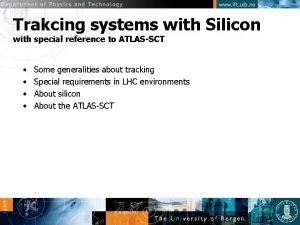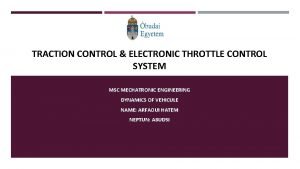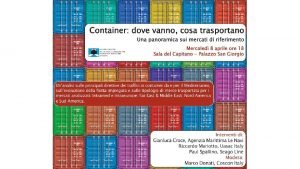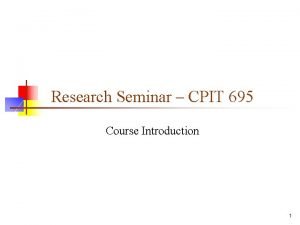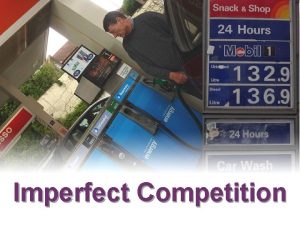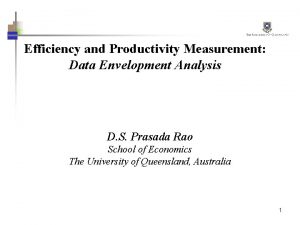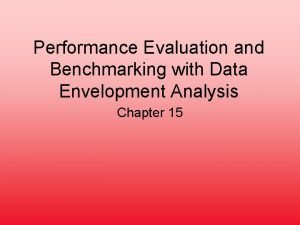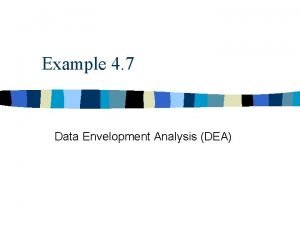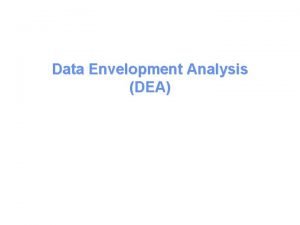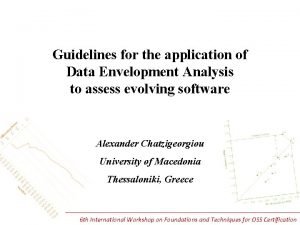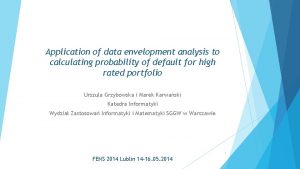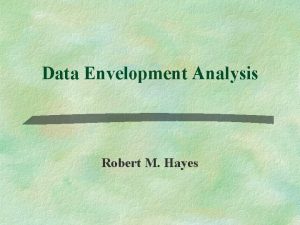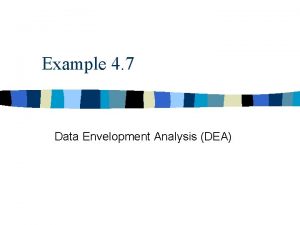Data Envelopment Analysis MSc in Regulation and Competition













- Slides: 13

Data Envelopment Analysis MSc in Regulation and Competition Quantitative techniques in Practice John Cubbin, City University©

DEA • What it is • Farrell measures of Efficiency – technical – allocative – scale • Running DEA • Dangers of DEA • Productivity over time

What it is Mathematical programming approach to measuring distance from a frontier. Uses Inputs , outputs, (and noncontrollables) Can be expressed as a ratio of weighted outputs to weighted inputs Ek = vjk Yj k / ui k Xi k = input i Yj k = output j for kth unit uik , vjk are weights chosen to maximise score of unit k, uik , vjk are constrained. Must not cause Em > 1 for any other unit m

An Economic Interpretation Due to Michael Farrell (1957) Technical efficiency = OB/OA Capital A Other things equal = output B Min combinations required (isoquant) O Labour

An Economic Interpretation (Output maximisation orientation) Technical efficiency = OB/OA Output 2 (e. g. lines) D Other things equal = inputs C Max combinations achieveable (production frontier) O Output 1 (e. g. calls)

Economic Interpretation (3) • The isoquant and production frontier are not known directly, but might be estimated from known data, using piecewise interpolation Capital K E B is an artificial observation - a combination of F and G O F A L B G H Min combinations J required (isoquant) Labour

Allocative efficiency • Depends on knowing prices • AE = min cost/actual cost = OD/ OB Capital A B Efficient Isocost line D O C Min combinations required (isoquant) Labour

Scale efficiency Output M T. E. = PR/PA S. E. = PQ/PR T. & S. E = PQ/PA P Q R A O This is input orientation. What about output orientation? Input

Running DEA • • Purpose - built software Excel/Solver macros Organise data for input Identify inputs, outputs and noncontrollables • Run • Interpret

How reliable is DEA? • Depends on whether frontier can be populated by efficient firms: – number of observations – number of dimensions – closeness to frontier of enough firms – distribution of variables

Dangers of DEA(1) Outliers appear efficient Capital K F B is an artificial observation - a combination of F and G O L B G A H E J Min combinations required (isoquant) Labour

Dangers of DEA(2) • Technical efficiency is not economic efficiency Output 2 (e. g. meter reading) B is technically efficient but economically inefficient Iso value lines B C O D Max combinations achieveable (production frontier) Output 1 (e. g. energy)

Dangers of DEA (3) Dilemma: to include or not to include variables • Include => spuriously efficient • Exclude => spuriously inefficient No well-established statistical test for inclusion/ exclusion
 Characteristics of a monopoly
Characteristics of a monopoly Monopoly vs monopolistic competition
Monopoly vs monopolistic competition Pure competition vs monopolistic competition venn diagram
Pure competition vs monopolistic competition venn diagram Perfect competition vs monopolistic competition
Perfect competition vs monopolistic competition Msc construction law
Msc construction law Telecommunication systems book
Telecommunication systems book Msc finance and banking tor vergata
Msc finance and banking tor vergata Trakcing msc
Trakcing msc Msc traction
Msc traction Hapag qq
Hapag qq What is an msc?
What is an msc? Almacenes msc
Almacenes msc Grenoble ecole de management msc finance
Grenoble ecole de management msc finance Prof msc
Prof msc







